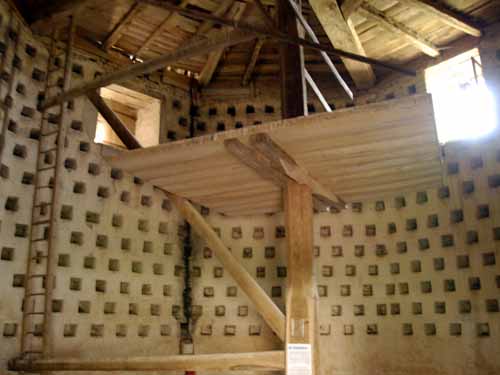The countryside of France is dotted with pigeonniers, or dovecotes, ranging from little louvred boxes on the roof of a house to large free-standing towers. The use of pigeonniers arrived in France with the Romans, but the oldest examples still in existence are from the fourteenth century.
The advantages of keeping a dovecote were twofold – firstly, to provide animal protein in a diet largely made up of cereals, and secondly, to collect the droppings as fertiliser for all sorts of crops. The second use was probably more important than the first.
In a typical pigeonnier, the inner walls were lined with nesting boxes, accessible by a ladder set on a rotating arm.
Until the fourteenth century, anybody could own a pigeonnier, but after that their possession was restricted. Only landed gentry could have a free-standing one and its size depended on the amount of land he owned.
There was tension with tenant farmers when vast flocks of pigeons owned by the local lord would descend on their crops and strip them bare.
After the Revolution, the monopoly on ownership of pigeonniers was removed, but owners were required to provide feed for their pigeons in the dovecote itself.

